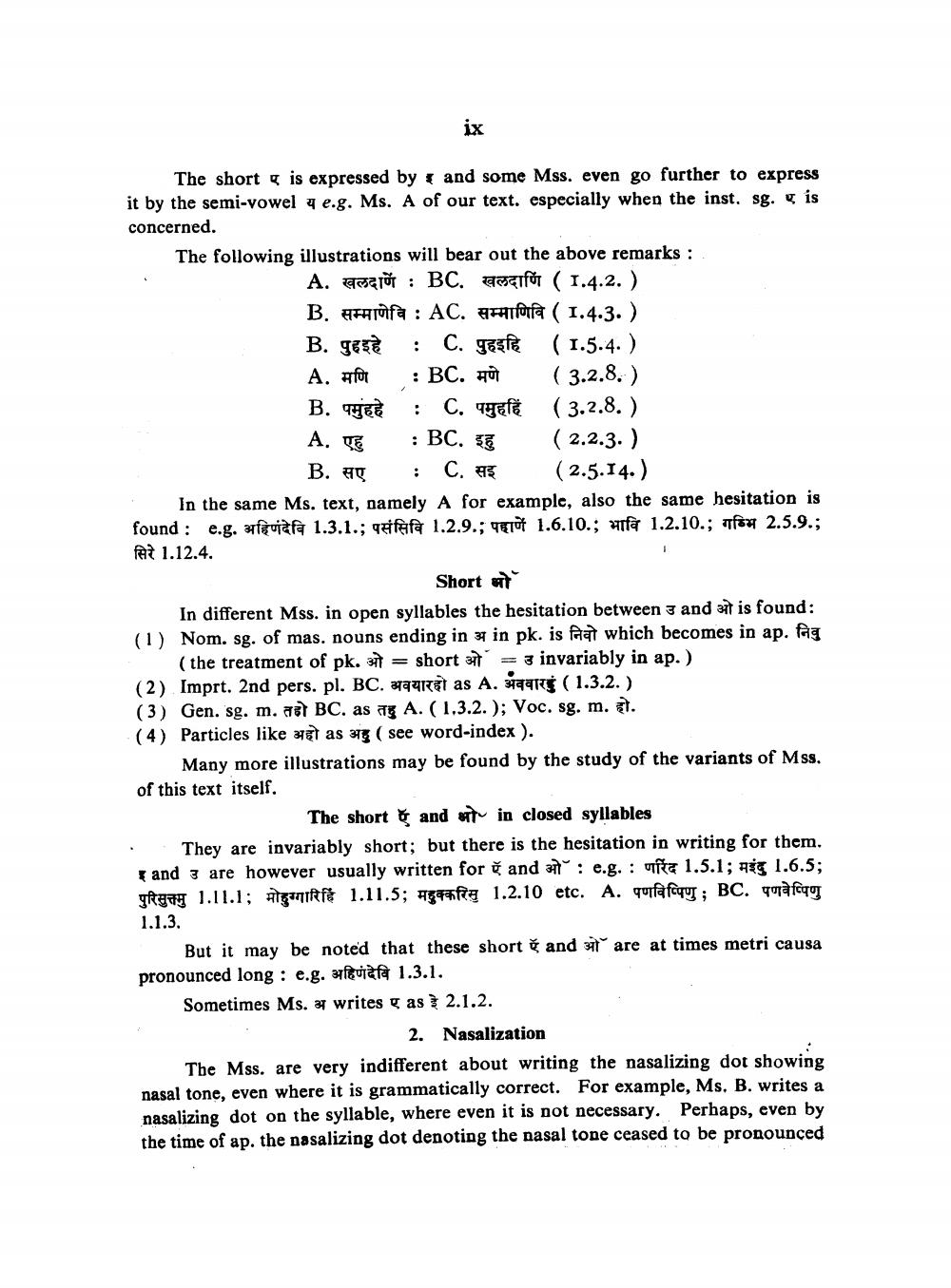________________
ix
The short is expressed by < and some Mss. even go further to express it by the semi-vowel q e.g. Ms. A of our text. especially when the inst. sg. is concerned. The following illustrations will bear out the above remarks :
A. asa : BC. auerfo ( 1.4.2. ) B. alfa : AC. fifa ( 1.4.3. ) B. gETE : C. gesla (1.5.4.) A. A for : BC. ū (3.2.8.) B. TEE : C. quefa (3.2.8.) A. E : BC. E (2.2.3. )
B. a : C. (2.5.14.) In the same Ms. text, namely A for example, also the same hesitation is found : e.g. iurafa 1.3.1.; qfara 1.2.9.; Tot 1.6.10.; a 1.2.10.; 54 2.5.9.; PAR 1.12.4.
Short भो
In different Mss. in open syllables the hesitation between 3 and it is found: (1) Nom. sg. of mas. nouns ending in 3 in pk. is at which becomes in ap. fag
(the treatment of pk. 37 = short 3 = 3 invariably in ap. ) (2) Imprt. 2nd pers. pl. BC. 99et as A. 499ký ( 1.3.2.) (3) Gen. sg. m. at BC. as 73 A. (1.3.2.); Voc. sg. m. t. (4) Particles like ant as 373 ( see word-index).
Many more illustrations may be found by the study of the variants of Mss. of this text itself.
The short and st in closed syllables They are invariably short; but there is the hesitation in writing for them. and 3 are however usually written for and 37: e.g. : 1.5.1; nig 1.6.5; gitar 1.11.1; ATTIR 1.11.5; 99 fra 1.2.10 etc. A. qufafaqu; BC. qafqo 1.1.3.
But it may be noted that these short and so are at times metri causa pronounced long : e.g. salviata 1.3.1. Sometimes Ms. 2 writes & as 2.1.2.
2. Nasalization The Mss. are very indifferent about writing the nasalizing dot showing nasal tone, even where it is grammatically correct. For example, Ms. B. writes a nasalizing dot on the syllable, where even it is not necessary. Perhaps, even by the time of ap. the nasalizing dot denoting the nasal tone ceased to be pronounced




